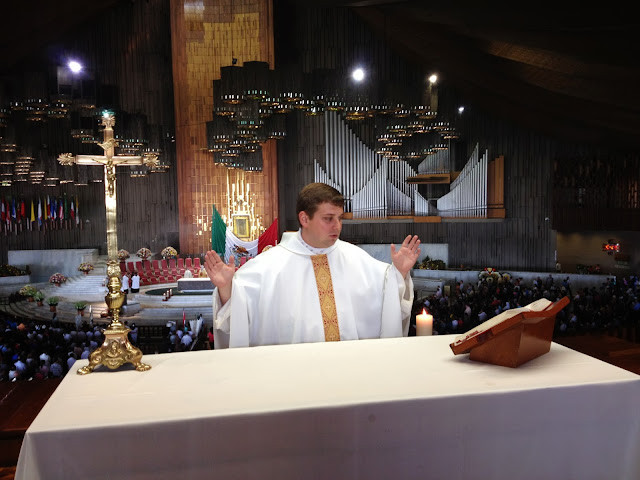Nativity (detail), Correggio, 1530
As special as all of those are, however, I answered with a memory that is much more recent. A few years back, when I was in seminary, I had the opportunity to travel to the Holy Land during the Christmas break. On a cold Christmas morning, we priests and seminarians celebrated the Mass at Dawn – the very Mass we are celebrating now – on the shores of the Sea of Galilee, close to the place where Jesus once multiplied the loaves and fishes. Just as we began Mass, the sky began to soften and brighten a bit, and as the Gospel was read – this same Gospel that the deacon just proclaimed – the first rays of the dawn appeared over the hills across the sea. Soon, the whole outdoor chapel where we were celebrating Mass was illuminated by the rising sun, and the warmth of its rays shone upon us.
I suppose the memory of that Mass has stayed with me because it helped make clear for me one of the important ideas about Christmas: that at Christmas, we celebrate the coming of the Light of the world. In fact, since the early days of the Church, Christians have used this image of light to help explain for themselves the mystery of this feast. For example, it’s the symbol of Christ as Light that permeates all of the ancient antiphons and chants, all of the old collects and hymns. The earliest Christians used light as the most fitting image of what Jesus meant for them – that in the newness of the Christ child, the light of God has shone forth in humanity. No longer are we just wretched sinners – our very nature has been redeemed by the fact that God has become one of us. In that sense, Jesus’s birth is a radiant dawn for all of us, because the splendor of eternal light is now something that we too can bask in.
The same thing can be seen in the great works of Christian art. If you look at the masters of the Middle Ages and the Renaissance, whenever they painted the Christmas event, they didn’t use any external source of light, like a moon or a fire or a lamp. Rather, the light for the scene comes from Jesus himself. Mary and Joseph and the animals in the stable are all themselves illuminated by the babe in the manger, for he is the source of light.
If we recall this image, of Christ as Light, of his birth as the Dawn of our salvation, then I think we are able to remember two important things about Christmas Day:
1) If Jesus is the light, then he has come to illumine our darkness. Recall the words of Isaiah, a people in darkness have seen a great light. We are those people. We have seen the light, and yet, as we know, so often the darkness around us remains. Perhaps we feel distant from God, perhaps we have fallen out of the practice of prayer, perhaps we are dismayed at the terrible things we see in the news or in the loss of a loved one whose light has passed beyond this world. Into every darkness we have, Jesus the Light promises to light our way. Into every valley of shadow of death, the dawning of the Sun of Justice will shine forth. His coming once as a child in the manger of Bethlehem is but the promise of his final coming, in glory and majesty, when he will set all things right.
2) The light of Christ is manifold. It is meant to be shared. For us who have dwelt in darkness, and have now been illuminated by his light, we should shine forth to be light for others. Slowly, slowly, the darkness around us will fade the more that we seek to let the light of Christ shine forth through us. Like the shepherds, who heard from the angels the Good News of our salvation, the lives of others can be radically changed, radically saved, if only they be led by us to encounter that one who is our light, the Prince of Peace who awaits us.
It is that reason – that Jesus has come for us, to embrace us with his love – that Christmas is too important to be celebrated merely once a year. I think that is the heart of what I realized that morning in Galilee a few years ago. With each sunrise, we must again remind ourselves that Christ our Light has come into the world, to shine upon our path, to guide our feet into the way of peace. And with the dawning of every new day, we must again convince ourselves of the importance of not only remaining in his light but of guiding others to encounter it.
So whatever we do this Christmas – whatever gifts we receive, whatever delicacies we eat, and more importantly whatever joys we are glorying in and whatever pains and sorrows we are enduring – let’s make this Christmas truly memorable – memorable not because of those things, but because of who it is that we welcome once again. Let us strive to encounter again today, and every new day, whatever our daily circumstances, the radiance of the light of the newborn Christ. Let us allow him, today and every day, to illumine again our minds and hearts, to let his light shine forth in our deeds, so that the Son of God on high, the radiant dawn, the morning star, the splendor of light eternal, will make known his salvation to all the world.
Merry Christmas, everyone!

























